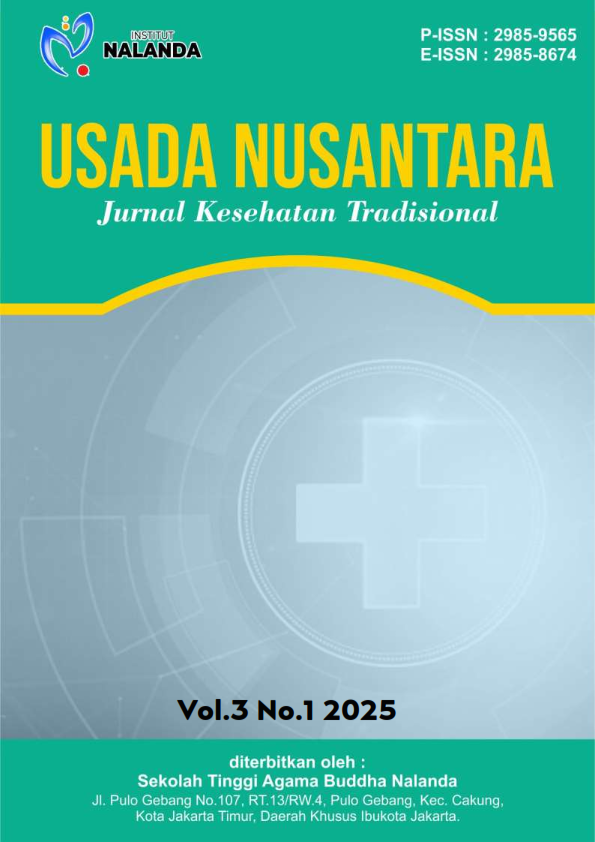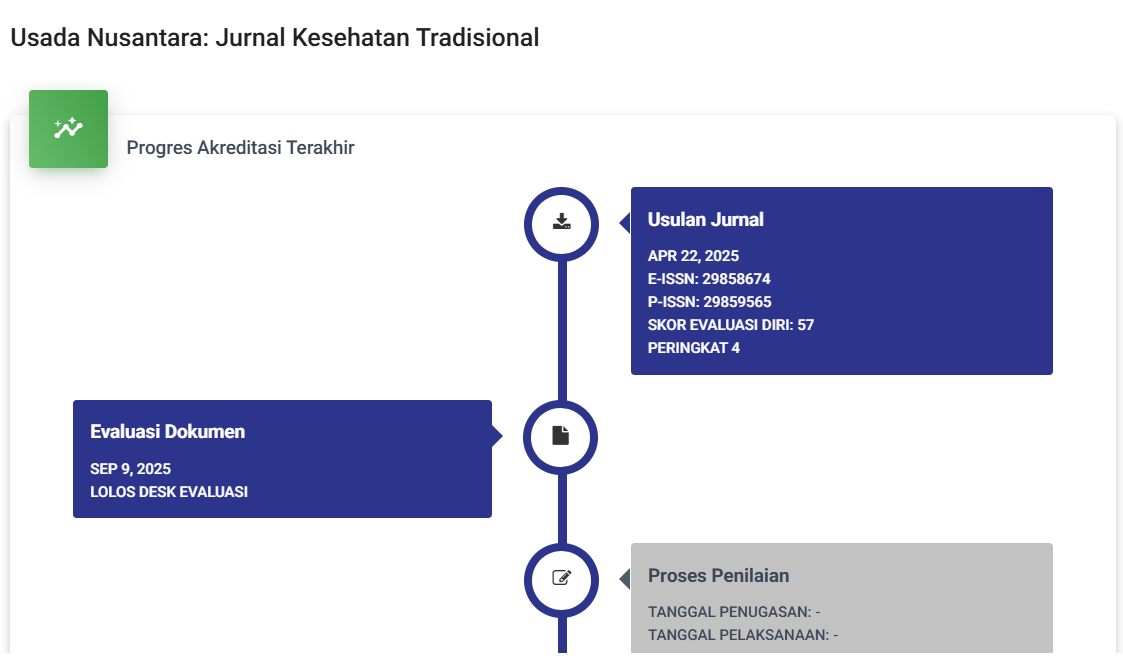Faktor Faktor yang Berhubungan dengan Kejadian Putus Obat pada Pasien Tuberkulosis Paru di Rumah Sakit Bhakti Asih Tangerang
DOI:
https://doi.org/10.47861/usd.v3i1.1656Keywords:
Pulmonary, Tuberculosis, medication, non-compliance, riskAbstract
Background: Pulmonary Tuberculosis (TB) is an infection caused by Mycobacterium tuberculosis, primarily affecting the lungs and spreading through airborne droplets. According to the World Health Organization (WHO) 2020, tuberculosis remains a significant global health challenge and requires ongoing efforts for its control as part of the Sustainable Development Goals (SDGs). Objective: This study aims to identify the factors associated with medication non- compliance in pulmonary tuberculosis patients at Bhakti Asih Hospital, Tangerang, focusing on age, gender, knowledge about tuberculosis, medication side effects, and family support. Methods: A quantitative approach was employed, using primary data from questionnaires in a field research method. The sample consisted of 40 patients diagnosed with pulmonary tuberculosis. Data were collected through interviews and analyzed using Chi-Square tests to examine the relationship between independent variables and medication non-compliance. Results: The Chi-Square test revealed significant associations between age (p = 0.038), knowledge (p = 0.033), medication side effects (p = 0.049), and family support (p = 0.027) with medication non-compliance. Gender (p = 0.62) did not show a significant association, although males were found to have a 4.037 times greater risk of non- compliance compared to females. Conclusion: Factors such as age, knowledge about tuberculosis, medication side effects, and family support are significantly associated with medication non-compliance in pulmonary tuberculosis patients at Bhakti Asih Hospital, Tangerang. Recommendation: Health education should focus on improving patient knowledge and managing medication side effects. The role of family support should also be strengthened to enhance patient adherence to tuberculosis treatment.
References
Alford, C. L., et al. (2019). The role of social and economic factors in tuberculosis treatment adherence. BMC Public Health, 19(1), 753. https://doi.org/10.1186/s12889-019-7117-2
Alimun Hidayat, A. A. (2014). Metodologi penelitian kebidanan teknik analisa data. Salemba Medika.
Arikunto, S. (2014). Prosedur penelitian: Suatu pendekatan praktik (6th ed.). Rineka Cipta.
Arya, R., et al. (2017). Gender disparities in tuberculosis treatment outcomes. Journal of Public Health Research, 6(2), 759.
Atikawati, D. (2015). Komplikasi tuberkulosis paru. Jurnal Penyakit Paru Indonesia, 17(1), 45-52.
Baker, M., Johnson, L., & Smith, R. (2020). Pengaruh gizi terhadap risiko terjadinya TB aktif. Jurnal Gizi dan Kesehatan, 15(3), 45-52.
Balogun, M. R., et al. (2019). Family support and TB treatment adherence: A qualitative study. BMC Public Health, 19, 155. https://doi.org/10.1186/s12889-019-6477-4
Centers for Disease Control and Prevention. (2020). Tuberculosis (TB) statistics and facts. Retrieved from https://www.cdc.gov/tb/statistics/default.htm
Cheng, H., et al. (2018). Gender differences in tuberculosis treatment adherence and outcomes: A review. Journal of Women's Health, 27(9), 1124-1133. https://doi.org/10.1089/jwh.2017.6531
Daftary, A., et al. (2017). Global tuberculosis: A review of clinical epidemiology and diagnosis. Clinical Infectious Diseases. https://doi.org/10.1093/cid/cix687
Department of Health, Republic of Indonesia. (2020). Pedoman pengelolaan tuberkulosis. Kementerian Kesehatan Republik Indonesia.
Fauziyah, N. (2010). Faktor yang berhubungan dengan drop out pengobatan pada penderita TB paru di Balai Pengobatan TB Paru (BP4) Salatiga. Skripsi FIK Universitas Negeri Semarang.
Herchline, T. E. (2017). Clinical manifestations of tuberculosis. In Tuberculosis and its diagnosis. Retrieved from https://www.clinicalkey.com
Khan, F. A., et al. (2019). Side effects of tuberculosis treatment: Effect on treatment adherence. BMC Infectious Diseases, 19, 439. https://doi.org/10.1186/s12879-019-3943-7
Korzeniewska-Koseła, M. (2020). Penggunaan alkohol dan merokok tembakau sebagai faktor risiko tuberkulosis. Jurnal Epidemiologi, 17(1), 67-72.
Lönnroth, K., et al. (2015). Gender differences in TB prevalence and treatment outcomes. International Journal of Tuberculosis and Lung Disease, 19(9), 1044-1051. https://doi.org/10.5588/ijtld.15.0395
Maher, D., et al. (2015). The social and behavioral factors influencing tuberculosis treatment adherence in men and women. Journal of Infectious Diseases, 212(4), 551-558. https://doi.org/10.1093/infdis/jiv170
Martin, A., & Palomino, J. C. (2014). The resistance of Mycobacterium tuberculosis to anti-tuberculosis drugs. Journal of Medical Microbiology, 62(4), 1010-1015. https://doi.org/10.1099/jmm.0.071072-0
Menzies, D., et al. (2016). Impact of side effects on treatment adherence in tuberculosis patients. International Journal of Tuberculosis and Lung Disease, 20(3), 321-327.
Minum, T., et al. (2021). Dukungan keluarga dalam pemulihan pasien tuberkulosis paru. Jurnal Keperawatan Indonesia, 15(2), 98-103.
Notoatmodjo, S. (2014). Faktor-faktor yang berhubungan dengan TB paru putus obat. Jurnal Kesehatan Masyarakat, 9(2), 105-110.








